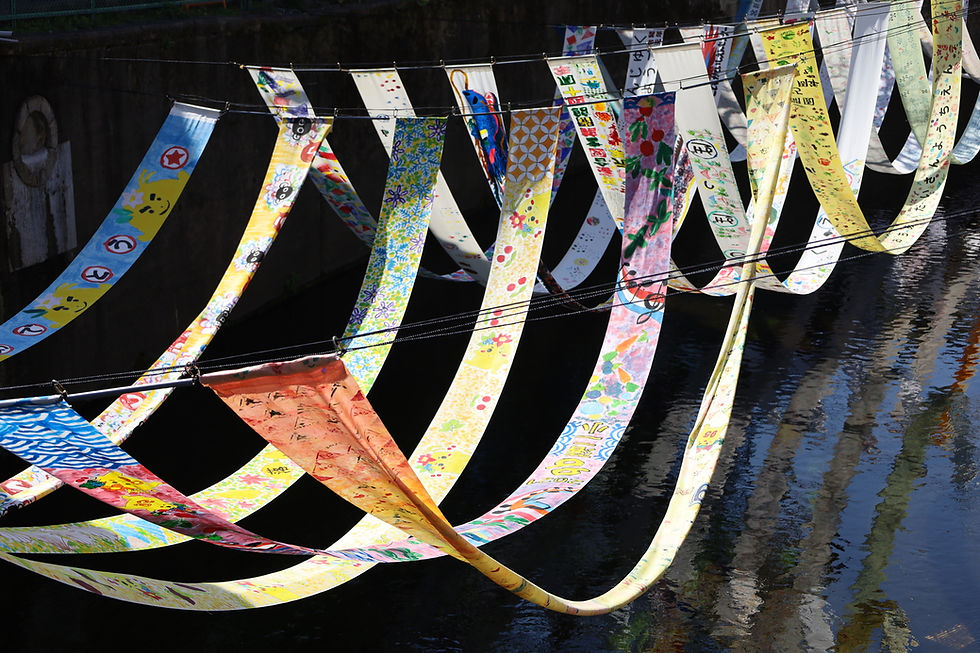Learning the "Iki" of Edo, Tokyo: The Edo Komon Kimono as a Symbol of "Iki"
- Shinya Yamada
- Aug 3, 2024
- 2 min read
Updated: Sep 21, 2024

I have introduced the town of Kagurazaka in Shinjuku Ward and the Kagurazaka Geisha as embodying "Iki" several times in our blog. This time, I will tell you about how the Edo Komon kimono, produced by the local dyeing industry in Shinjuku Ward, is the epitome of "Iki."
The history of Komon dyeing patterns on kimonos is said to date back to the Muromachi period (1336-1573). The foundation of Edo Komon can be traced to the Kamishimo, formal attire worn by samurai during the Edo period (1603-1868). It is said that the Daimyo of that time devised unique patterns for their family crests and competed with their designs.

The Edo Komon Kimono as a Symbol of "Iki"
The refined taste of dyeing intricate patterns in a single color, which characterizes Edo Komon, eventually transcended class boundaries and became widely loved by the general public. During the Edo period, luxurious clothing was prohibited by the shogunate's sumptuary laws. In such times, Edo Komon was embraced as a subtle form of sophistication and elegance, becoming popular among the common people.

The Birth of "Iki": Cultural Flourishing in the Late Edo Period
The concept of "Iki" emerged during the late Edo period, around the Bunka and Bunsei eras (1804-1830). This was a time when the wealthy merchant culture centered in Edo flourished, supported by the economic power of townspeople. It was also the period when ukiyo-e artists like Katsushika Hokusai and Utagawa Hiroshige were active.
The Elegance of Edo Komon: Exploring the Subtle Beauty and Iconic Patterns
In terms of kimonos, "Iki" can be described as having a subdued yet refined and sophisticated beauty. Edo Komon features intricate patterns dyed in white on backgrounds of colors like navy or brown. From a distance, it appears plain, but up close, the fabric reveals meticulously detailed patterns, covering its entire surface—a true representation of "Iki."
One of the representative patterns of Edo Komon is "Same" (shark). This pattern consists of small round dots arranged in semicircles, forming a continuous motif reminiscent of sharkskin, hence the name. There are various types of "Same," with the finest called "Goku Same," featuring over 900 tiny dots within a one-inch square. Along with patterns like "Toshi" and "Gyogi," "Same" is considered part of the prestigious "Edo Komon Triad," held in a class of their own.

Experience the Art of Edo Komon: Create Your Own "Iki" with Tomita Sen Kogei
"Tokyo Some Komon" (Edo Komon) is designated as a traditional craft by the Japanese government. It is a pattern officially recognized as embodying "Iki." Why not experience this "Iki" by not just looking at Edo Komon but creating your own?
At Tomita Sen Kogei (Tokyo Some Monogatari Museum), founded in 1882, you can easily experience making Edo Komon by dyeing a tote bag. This hands-on dyeing experience is simple enough for children as young as elementary school age, making it perfect for families to create original tote bags with different patterns. Why not make a memorable summer experience by creating a tote bag you can use every day?
Next time, I will explain "Shijuhattcha Hyakunezumi" (forty-eight browns and one hundred grays), which were born under the sumptuary laws of the Edo period.








Comments